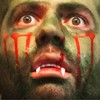
Advertisement


Raymond Pettibon: Well, I wasn't into my dog doing that, but it's happened a handful of times. I said on Twitter recently that one of my dogs pissed on my drawings and their value went up twice over.
Marcel Dzama: I had a rabbit that used to spray his urine all over my paintings. I thought he improved them. My grandfather painted a family portrait for one of my mom's friends, and there was a problem with what they thought was dripping varnish, but actually one of his cats had sprayed it.
Marcel: When I have drawings lined up, my cat will scratch the sides like a scratching post.
Raymond: When dogs take a leak on a drawing, it's so acidic that you just have to throw everything out or cut out the urine stain. I don't want to make it hard for people who do conservation. With some artists, there's no question of their arrogance. Like the abstract expressionists purposely made it hard on posterity by painting with house paint with no thought as to how it would get preserved down the line. I don't want the people who buy my work to worry about preserving it. My mother saved my art that I did when I was three, four, five, six years old. This was done on the back of mimeograph sheets, and they're in impeccable condition. It's not hard to get paper that's entirely acid free… Unless you're drawing blotter acid, which is an entirely different thing. How old are you guys?
Marcel: I'm 39.
Raymond: I'm 39. I've been 39 many times. Are you nervous about your 30s ending?
Raymond: I'll be 39 for a while still.
Marcel: I'm fine with it. I just had a baby last year. I think if I hadn't had my son I'd be more nervous about aging. I had a lot of friends and relatives who had passed away the year before, and I was so depressed. Raymond, is that your baby pictured on your shirt?
Raymond: Yeah, that's Bo when he was younger. He's got really curly hair now. Raymond works on one of his many paintings blanketing the gallery floor.
Advertisement

Raymond: That's largely just an irrelevancy. Why not add a y to every other word? It slows down the experience of reading the words, and makes them not just communicative devices but objects. It doesn't hurt anyone, yet it does cause uproar in the Twitter community. I get shouted down off every Soulja Boy and Lil Wayne group because of my spelling, but I'm getting criticized by people who are largely illiterate. I've got the history of Western literature in my head. I've read every major writer and poet there is. I think I know a little bit about literature. Take James Joyce in Finnegans Wake for his spelling—he invents every other word. He uses combinations of words coming from Chaucerian English to Icelandic, and I'm getting schooled because I spell Lil Wayne with two i's instead of one. There are reasons why I do things, and it's not that I'm a bad speller. This isn't that important to me because I don't give a fuck. Marcel, are you on Twitter?
Marcel: No, I don't have time for that sort of thing, but Raymond's a poet.
Raymond: I did it for the challenge. I first got on just to tweet Burma-Shave jingles. I should probably focus on Marcel at this point.
Raymond: Marcel's style encompasses so many things besides just paper. He does theater, film, and sculpture, but you can always tell it's his work from his first line. [At this point, Raymond turned away from us to work on his painting, and I continued to interview Marcel alone.] Marcel draws a bat for the author.
Advertisement

When I'm drawing, I see it as a stage performance. The animals are actually people in costumes. When I was in Canada, I would draw very minimal compositions with two characters. After coming [to New York], my images became much more claustrophobic. I like imposing order on chaos and turning it into a grandiose opera. Is that how you generally view your creative process?
Yeah. A lot of the time I'll be automatic-drawing, and I won't know what I'm doing at the beginning. By the end I'm trying to make sense of it. Are any of the things you paint based on dreams you have?
Yeah, but not so much anymore with the baby—I live on coffee now. I used to keep a sketchbook by the side of the bed. It wasn't so much that I'd wake up and write down the dream, but I'd get ideas when I was between dreaming and being awake. You're a guy who makes a lot of stuff. There are those statues and lights and salt and pepper shakers and Uzama action figures based on your art.
Well, those all came out around the same time, when I first came to New York. I have a little bit of a collector tendency. When I lived in Canada, I had a bigger house. I had a big record collection and little lead characters. Can you talk to me a bit about your interest in the color brown? It's all over your work. A lot of people are turned off by brown, but you make very good use of it.
Oh yeah, I do like that color. Once in the mid-90s, I was making root beer, and I spilled some root-base syrup onto my sketchbook and started playing with it. I've been painting with root-base syrup ever since. There's no acid or sugar in the syrup, it's just the root base, so it doesn't fade or make the paper brittle. Also, seeing Leonardo da Vinci's sketchbooks with the drawings done in brown lines had an impact. Somehow brown feels important. Marcel's book comes out November 5 from Abrams. Isn't it pretty?
Advertisement







